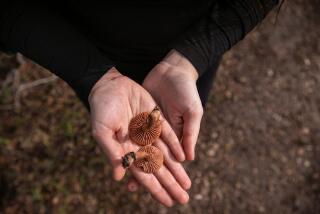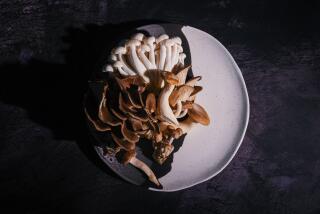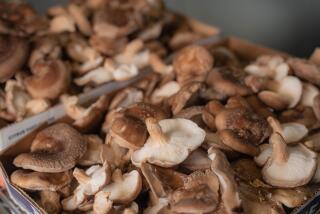King bolete
- Share via
[BOLETUS EDULIS]
With the first soaking rains of autumn, mycophagists (mushroom eaters) all over the Northern Hemisphere begin drooling in anticipation of the king bolete harvest. Up to Thanksgiving, these large fungi grow under conifer trees and then become scarce until a secondary spring crop. Through winter, the bolete mystery unfolds underground, where their microscopic spores germinate into mycelial strands. Weaving through soil and decaying wood in search of nutrients, these strands secrete enzymes to break down plant cellulose and lignin -- freeing up carbohydrates. This bounty helps the mycelia grow into nets of pale fibers that form the main body of the fungi. Mushrooms are the fruit of mycelium.
NATURAL HISTORY
This choice edible is sold as dried porcini, but not all boletes are edible. Mushrooms can kill; only those expert at identifying them in the wild should eat them.
KEY CHARACTERISTICS
Spongy, densely pockmarked caps up to 12 inches across and stems up to 8 inches thick.


